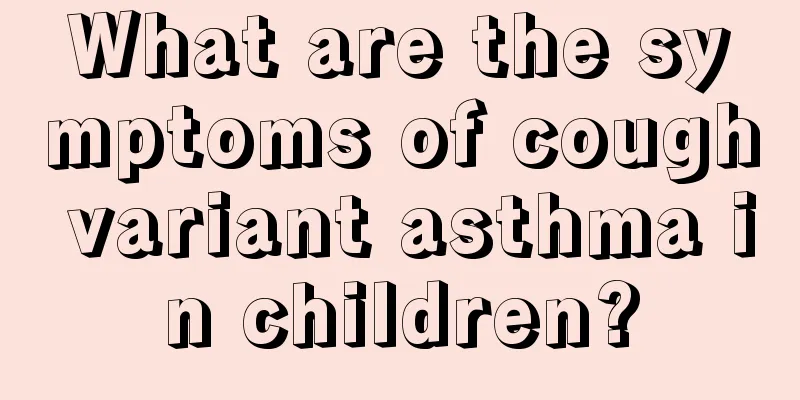What are the common skin diseases in children?

|
Children have a relatively weak constitution, especially their skin tissue is very delicate, so we should pay more attention to their daily care. So today I will tell you in detail what are the common skin diseases in children? Let’s take a look together! 1. Eczema Childhood eczema is the most common skin disease in children. The main areas of skin lesions are the cheeks, eyebrows, behind the ears, scalp and buttocks, while in older children, the main areas are the fingertips, elbows, orbital fossa and other parts. The skin is often scratched, red and oozing due to itching. Over time, the local skin becomes thick and hard. Eczema is an allergic inflammatory skin disease with a relatively complex cause that has not been clearly defined so far. Children with eczema often have an allergic constitution, which is the main factor causing eczema. Other factors such as sunlight, humidity and heat, cosmetics, soap, and fur can induce eczema. Eating fish, eggs, etc. can also aggravate eczema. Eczema is divided into three types according to the course of disease and the manifestation of rash: acute, subacute and chronic. Prevention and treatment of eczema: (1) Systemic treatment: In the acute and subacute stages and when the skin lesions are extensive, use calcium gluconate, vitamin C, and antihistamines such as chlorpheniramine and chlorpheniramine under the guidance of a doctor. If accompanied by infection and fever, antibiotics can be added. (2) Local treatment: In the acute stage, when redness, swelling, erosion and exudation are obvious, use boric acid water for wet compresses, and apply zinc oxide oil, Bio-Bene, etc. externally. The principle of treatment in the subacute stage is to reduce inflammation and relieve itching. Calamine lotion, eczema cream, etc. can be used. In the chronic stage, it is used to relieve itching and promote the absorption of dermal inflammatory infiltration. Black bean oil ointment, eczema cream, and Aloesone ointment can be used. (3) Home care: First, identify suspected pathogenic factors and eliminate them. For example, if you suspect you are allergic to milk, boil the milk for a longer time to denature the protein or replace the milk powder to reduce allergens. Eat less or no fish, shrimp, beef, mutton, eggs, spicy and other irritating foods. Avoid feeding too much food to maintain normal digestion. Do not use soap to wash the affected area. Prevent children from scratching the affected area when they are itchy to avoid secondary infection. The underwear should be clean, loose and soft, made of pure cotton, not disposable diapers. Wash and change diapers frequently, and take a bath on time. Keep hygiene. 2. Prickly heat Prickly heat is a skin disease caused by excessive sweating in summer, which is divided into white prickly heat, red prickly heat, and flank prickly heat. Prevention and treatment of prickly heat: mainly indoor ventilation, especially in summer to keep cool, clean and dry, do not wear too many clothes, too thick, or too hard clothes, change and wash them frequently, bathe the skin frequently, take a shower immediately after sweating and do not accumulate sweat, and apply some talcum powder or prickly heat powder after washing to avoid scratching. Generally, prickly heat can disappear on its own if the above points are mastered, without the need for special treatment. If prickly heat is accompanied by infection, you need to go to the hospital for treatment. If it is combined with pus infection and becomes pustular sores, antibiotics (such as chloramphenicol ointment, Bactroban, etc.) can be added for treatment. If combined with Candida infection, nystatin can be added to the powder or calamine lotion. 3. Impetigo Impetigo is an acute suppurative skin disease common in children in summer and autumn. It is prone to occur in exposed parts such as the face, trunk and limbs. Bullae suddenly occur. The blister fluid is clear at first, but then becomes turbid and purulent. The blister wall is thin and easy to rupture, revealing a bright red, moist eroded surface. It quickly spreads to various parts of the trunk within a few hours or 1 to 2 days, and may sometimes be complicated by sepsis, pneumonia, nephritis or meningitis and lead to death. Prevention and treatment of impetigo: (1) Family members of medical staff suffering from purulent skin diseases must not come into contact with infants and young children. (2) The baby's skin should be kept clean and hygienic. The baby should be bathed regularly, and his/her clothes, bedding and diapers should be washed frequently and disinfected with boiling water after washing. The room should be well ventilated and heat dissipated. If a sick child is found, he/she should be isolated immediately. (3) Systemic treatment: Give effective antibiotics such as penicillin and erythromycin as early as possible and provide supportive therapy to treat complications in a timely manner. (4) Local treatment: Pay attention to protecting the wound surface and avoid friction. Cut the blister wall under sterile conditions and absorb the blister fluid. You can apply 1% gentian violet solution or 0.5% to 1% neomycin ointment externally. 4. Chickenpox Varicella is an acute infectious disease caused by a virus. It is common in children, especially those aged 1 to 10 years old. It is highly contagious and can easily spread among children in kindergartens or schools. Chickenpox is relatively easy to recognize. Its incubation period is about 2 to 3 weeks. There are some mild systemic symptoms, such as mild fever, general fatigue, headache, and loss of appetite. Skin lesions may appear in 1 to 2 days, starting first on the face, then behind the ears, trunk, and limbs. Chickenpox initially appears as red needle-sized macules or small papules, which then quickly turn into round blisters the size of rice grains to peas. After 4 to 5 days, the blisters gradually dry and form scabs, which then fall off and heal. Care for chickenpox: Children with chickenpox should first be isolated at home and kept away from schools, kindergartens and public places to avoid infecting others. They need to be isolated until all skin lesions are dry and scabbed. Pay attention to bed rest. Drink plenty of boiled water, eat light food that is easily digestible, and eat less fish, shrimp, crab, beef and other foods. Avoid direct cold wind and keep fresh air indoors. Change underwear frequently. Do not scratch the rash. Apply gentian violet to broken chickenpox and calamine lotion to relieve itching. When herpes scabs form, do not pick off the scabs with your hands too early. Let them fall off naturally. This is especially true for herpes on the face, otherwise it will leave scars after healing, which is regrettable. Pay attention to the cleanliness of the oral mucosa, conjunctiva and vaginal mucosa. The mouth can be rinsed with light salt water. For younger babies, the mouth can be cleaned with a cotton swab dipped in light salt water and the baby should drink more boiled water. If the fever of chickenpox is below 38℃, no antipyretics are needed and you can drink more water. If the temperature reaches 38℃ or above, you can take antipyretics orally. If the temperature is as high as 39℃ or above, you can apply ice packs on the head to reduce the temperature. When systemic symptoms are obvious, vitamin B12 and isatis root can be given, and antibiotics can be added if the infection continues. 5. Scabies Scabies is a skin disease caused by scabies parasitizing human skin. It is highly contagious. Children get scabies mainly from babysitters, relatives from other places, schools, kindergartens, etc. Often when one person gets sick, the whole family is infected. Scabies mostly occurs in areas where the skin is thin and soft, such as between the fingers, armpits, around the navel, lower abdomen, genitals, and inner thighs. The skin lesions are rice-sized red papules, blisters, and pustules. The rash is extremely itchy, especially at night, often affecting children's sleep, and sometimes causing scratches, scabs, pigmentation, and secondary infections all over the body. Prevention and treatment of scabies ① Pay attention to personal hygiene, keep your hands clean, wash and dry clothes and quilts frequently, and go to the hospital for diagnosis and treatment in time if scabies is suspected to control the spread of scabies. ② If a scabies patient is found, he/she should be isolated and treated actively. If there are other patients at home or in the group, they should be treated promptly. ③ Apply 5% sulfur ointment externally, once in the morning and once in the evening for three consecutive days, and repeat the course of treatment after two weeks. After the scabies are eliminated, the skin itching usually disappears after 1 to 2 weeks. Through the editor’s sharing above, you have a certain understanding of the symptoms and treatments of common children’s skin diseases. If you find that your child has adverse symptoms, you should seek medical treatment in time. |
<<: Why does my child have recurring coughing attacks?
>>: What should we do if children have recurrent respiratory infections?
Recommend
What should I do if my child’s teeth are decayed?
Many parents do not pay much attention to their c...
Why does my 4-year-old baby always complain of stomachache?
Many children will have some stomach pain as they...
Treatment of pus discharge after umbilical cord shedding in newborns
Pus discharge after the umbilical cord falls off ...
The reason why three-month-old babies drool a lot
After birth, many babies learn to roll over and c...
How to treat burns on children faster
Children getting scalded happens frequently in ou...
How to treat severe pneumonia in children?
If some young children suffer from pneumonia, it ...
What happens if I get the thrush vaccination?
Thrush is a common disease among newborns, and it...
What should I do if my child has a cough for half a month and the medicine doesn't get better?
If a child coughs frequently and has not seen any...
What foods can cause early puberty?
Now our living standards are getting higher and h...
The impact of divorce on children
Due to changes in modern concepts, people's v...
5 common mistakes you make when trying to get your baby to sleep
Adequate sleep is key to healthy growth in childr...
Why do children lose their appetite?
Nowadays, many children have similar conditions s...
15-month-old baby girl's height and weight
After having a baby, we as parents cannot be idle...
What kind of sports are good for children?
We all know that children and the elderly are rel...
Treatment of a two-year-old baby with a fever of 38 degrees
As soon as the baby has a fever, the mother will ...









